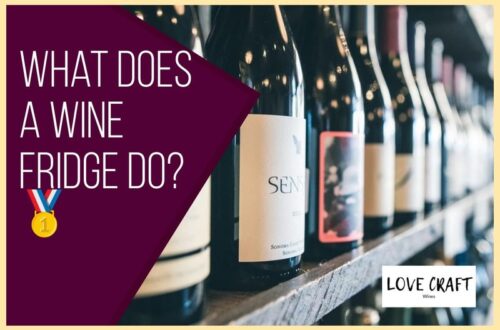Have you ever wondered about the origins and meaning of the phrase ‘wine and dine’?
Some theories suggest that it originated from the Middle Ages, where knights would feast and drink wine with their ladies after a long day of jousting. However, there is no concrete evidence to support this theory.
Despite the lack of historical evidence, ‘wine and dine’ has become a common phrase used to describe a luxurious and indulgent dining experience.
From fancy restaurants to dinner parties, the act of ‘wining and dining’ someone has become a way to show appreciation and affection through the sharing of food and drink.
But what does this phrase really mean, and how has its significance evolved over time?
Let’s explore the meaning and cultural significance of ‘wine and dine’.
Table of Contents
The Historical Origins of ‘Wine and Dine’
Discover the fascinating history behind the popular tradition of wining and dining.
The etymology of the phrase ‘wine and dine’ dates back to the Middle Ages when wealthy nobles hosted elaborate feasts that included an abundance of wine and food. These extravagant events were often held for important guests, such as visiting dignitaries or royalty, and were a way to display wealth and status.
The phrase has since evolved to encompass any situation where one is treated to a lavish meal, usually accompanied by fine wine.
The cultural context of ‘wine and dine’ has also evolved over time.
In the 19th and early 20th centuries, it was commonly used to describe the courtship rituals of the upper class, where a man would lavish his date with an evening of fine dining and wine.
It was also a popular phrase used in business contexts, where executives would entertain clients or potential business partners with fancy dinners and expensive wines.
Today, the phrase has become more ubiquitous and is often used to describe any situation where one is treated to a luxurious meal, whether it be a romantic dinner for two or a corporate event.
The Evolution of the Phrase’s Meaning
The evolution of ‘wine and dine’ has led to its current connotation as a tool for networking and establishing business relationships.
From its historical origins as a term used to describe the lavish meals of the aristocracy, the phrase has undergone a linguistic transformation, taking on new meanings and implications.
In the modern context, ‘wine and dine’ is synonymous with entertaining clients, prospects, or colleagues in upscale restaurants or other venues to establish rapport and build a sense of trust.
In addition to establishing business relationships, ‘wine and dine’ can also serve as a means of socializing and networking.
The practice is often used by politicians and other public figures to cultivate relationships with influential individuals or groups.
While the phrase may have initially implied a level of extravagance, today, it can refer to any social or business gathering that involves food and drink.
In the next section, we’ll discuss some examples of how to ‘wine and dine’ effectively.
Examples of How to ‘Wine and Dine’
You’re in luck because we’ve got a few tricks up our sleeves for how you can charm and impress your guests during a meal. Whether you’re planning a romantic date, or a business dinner, ‘wining and dining’ your guests is an essential part of the experience.
Here are five tips to help you create the perfect ambiance, and make your guests feel special:
- Set the mood with soft lighting and candles.
- Serve a variety of appetizers, and make sure to cater to any dietary restrictions.
- Choose a main course that is both delicious and visually appealing.
- Offer a selection of wines to pair with each course.
- End the meal with a decadent dessert and coffee or tea.
By following these tips, you’ll be able to create an unforgettable dining experience that your guests will be talking about for weeks to come.
But what’s the significance of ‘wine and dine’ in modern society? Let’s take a closer look.
The Role of ‘Wine and Dine’ in Modern Society
If you want to create a lasting impression and build strong relationships, incorporating the art of wining and dining into your social and professional interactions is crucial. This practice has been widely embraced in business networking and romantic relationships, as it provides an opportunity to connect with others on a deeper level.
In the modern society, the phrase ‘wine and dine’ has evolved to encompass more than just the consumption of food and drink, but also the ambiance, conversation, and overall experience of the occasion.
In business networking, ‘wine and dine’ events provide a relaxed and sophisticated environment for professionals to connect and establish relationships. The setting allows for a more personal interaction, away from the usual office environment. These events can be used to showcase products and services or to discuss business deals in a more casual setting.
Similarly, in romantic relationships, ‘wine and dine’ is synonymous with a romantic evening out. It creates an atmosphere of intimacy and closeness that allows couples to connect on a deeper level. Whether it’s a first date or a special occasion, ‘wine and dine’ is a popular way to impress and woo a partner.
Exploring the Cultural Significance of ‘Wine and Dine
As you explore the cultural significance of wining and dining, you’ll discover how this age-old tradition has evolved into a symbol of hospitality, celebration, and forging stronger bonds with those around you.
For centuries, people have used exquisite cuisine and social etiquette to build and strengthen relationships. Sharing a meal has always been a way to connect with others, and the addition of wine has only made this experience more enjoyable. Wine has a way of relaxing people, bringing them together, and creating a sense of community that cannot be replicated in any other way.
The cultural significance of wining and dining is also seen in the way it is used to mark special occasions. Whether it’s a wedding, anniversary, or birthday, a celebration is never complete without a delicious meal and a bottle of wine.
People gather together to toast to the occasion, share stories, and create memories that will last a lifetime. The act of wining and dining is not just about the food and drink; it’s about the people you are with and the memories you are creating.
Frequently Asked Questions
What are some common dishes served during a ‘wine and dine’ experience?
When it comes to a ‘wine and dine’ experience, the dishes served can vary depending on the occasion and the preferences of the guests. However, one thing that’s important to keep in mind is wine pairing.
The dishes served should complement the wine being served to enhance the flavor of both. Some common dishes could include charcuterie boards with cured meats and cheeses, seafood dishes like oysters or shrimp cocktails, and steak or lamb chops.
The decor and ambiance of the event can also contribute to the overall experience. Soft lighting, elegant table settings, and floral arrangements can create a sophisticated and intimate atmosphere.
Is there a specific etiquette or dress code for a ‘wine and dine’ occasion?
When attending a wine and dine occasion, there are certain etiquette expectations and fashion choices that you should keep in mind.
For starters, it’s important to dress appropriately for the occasion, which typically means dressing in semi-formal or formal attire.
Additionally, you should be prepared to engage in polite conversation with your fellow guests and to exhibit good table manners throughout the meal. This might include waiting for everyone to be served before starting to eat, using the correct utensils for each course, and refraining from using your phone or other electronic devices during the meal.
By following these guidelines, you can ensure that you make a positive impression and enjoy a memorable wine and dine experience.
Are there any cultural differences in the interpretation and practice of ‘wine and dine’?
When it comes to wine and dine, there are definitely some cross-cultural interpretations that can differ greatly depending on where you are in the world.
For example, in some cultures, it’s more common to have a relaxed, informal gathering with friends and family, while in others, a wine and dine event may be seen as more formal and business-oriented.
Additionally, the historical origins of the phrase can also differ depending on the region. In some parts of the world, wine and dine may have originated as a way to showcase one’s wealth and status, while in others, it may have started as a way to bring people together for a shared meal and conversation.
Regardless of where you are, though, there’s no denying that wine and dine is a time-honored tradition that has been enjoyed by people all over the world for centuries.
What are some alternative phrases or expressions that convey a similar meaning to ‘wine and dine’?
Looking for different ways to impress a date or host a fun dinner party with friends? Instead of using the traditional phrase ‘wine and dine,’ try incorporating some creative alternatives like ‘feast and indulge’ or ‘dine and delight.’
You could also take a more playful approach with phrases like ‘wine and dine-o-rama’ or ‘eat, drink, and be merry.’ Regardless of the phrase you choose, focus on creating a memorable experience by planning unique menu items, setting a cozy ambiance, and adding personal touches like homemade decorations or custom cocktails.
According to a recent survey, 73% of people say that the overall experience is more important than the food itself, so don’t be afraid to think outside of the box and make your next dinner party one to remember.
Are there any health risks or concerns associated with excessive ‘wine and dine’ practices?
When it comes to the health risks of excessive ‘wine and dine’ practices, alcohol consumption and dietary habits are the main concerns.
Alcohol, when consumed in excess, can lead to a variety of health issues such as liver damage, high blood pressure, and weight gain.
Additionally, the foods often associated with ‘wine and dine’ events, such as rich meats and heavy sauces, can also contribute to negative health outcomes.
Furthermore, the social implications of these practices can also be concerning, as they often involve pressure to consume more alcohol and overindulge in food.
It’s important to maintain balance and moderation in both alcohol consumption and dietary habits to prioritize your health and well-being.
Conclusion
So now you know the meaning of the phrase ‘wine and dine.’ Whether you’re enjoying a romantic date night or networking with clients, the act of wining and dining has become a cultural staple.
As you sip on your wine and savor your meal, take a moment to appreciate the history and evolution of this phrase. From its origins as a form of courtship to its modern-day use in business and entertainment, wine and dine has stood the test of time. It’s a way to connect with others, build relationships, and indulge in the finer things in life.
But as you raise your glass and take another bite, remember that the act of wining and dining is not just about the food and drink. It’s about the experience, the ambiance, and the company you keep.
So whether you’re at a five-star restaurant or a cozy diner, make the most of your wine and dine experience. Connect with those around you, savor the flavors, and create lasting memories.
Cheers to the art of wining and dining!





